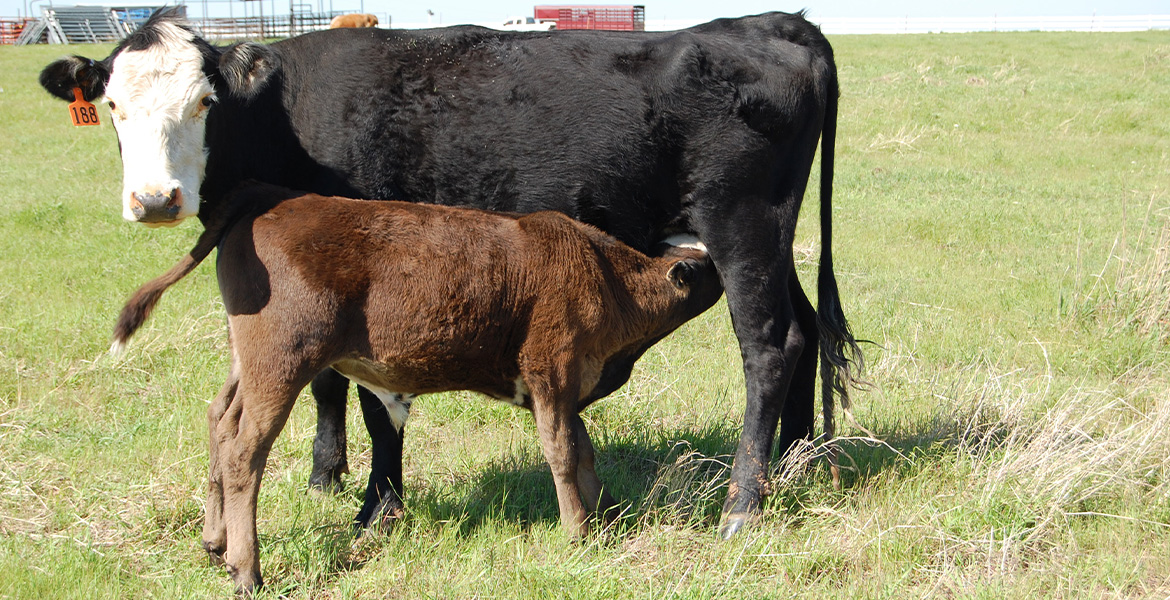
Biosecurity can keep beef cattle operations disease-free
Friday, August 30, 2019
This summer, Oklahoma and the country dealt with a number of disease outbreaks, including vesicular stomatitis, anthrax, and Eastern equine encephalitis. As most beef operations include horses, both cattle and horses faced potential threats.
Disease outbreaks highlight the critical importance of biosecurity procedures on every livestock operation. We usually think of applying these plans and procedures to protect against infectious and contagious diseases, but non-contagious diseases should also be considered.
The introduction of any disease into a herd can cause devastating losses from impaired fertility to limited growth and production to deaths. The most common approach taken by livestock producers to prevent these losses is vaccination. Vaccinations are an important part of any biosecurity plan. However, not all diseases have vaccines, so more approaches need to be included in biosecurity plans.
A comprehensive biosecurity plan starts with understanding how diseases spread. Generally, the organism responsible is transmitted by the fluids of the organ system it affects. For example, infectious diseases that cause diarrhea or other gastrointestinal diseases are spread through feces. Pneumonia and other infectious diseases of the lungs are spread through respiratory secretions. Infectious skin diseases are transmitted when animals contact each other directly or rub on the same fencepost. Reproductive diseases are often transmitted through breeding activity. Some diseases don’t fit this rule perfectly, but it’s true in most circumstances.
To prevent problems such as calf scours, raise calves in open areas so they don’t easily come into contact with each other’s feces. To prevent the transmission of respiratory viruses, don’t overcrowd or allow nose-to-nose contact across a fence.
Unfortunately, especially in Oklahoma, we also have to consider diseases that are transmitted by ticks and flies. An example is anaplasmosis, where the agent is transmitted through blood carried by the fly or tick to the next animal. This mode of transmission highlights one of the many reasons for an effective ectoparasite control program. Finally, some viruses and bacteria are tough enough to survive for a time outside an animal host. These can then be carried on truck tires, boots, clothes, tagging equipment, tack and other objects that come in contact with manure or other body fluids.
The most common breaches of biosecurity involve introducing new animals. Incoming animals have been in a different environment than the permanent herd and can introduce new pathogens. Even human visitors from other operations can bring things along with them. The home herd may not have developed immunity to these disease agents, making them susceptible. It can happen in the other direction, too. The home herd may have immunity to certain pathogens that the new animal hasn’t been exposed to before. It’s like sending a child to daycare or kindergarten. They’ve been at home and are immune to what’s there, but then they go and meet new children who come with a whole host of new and different bacteria and viruses, and they return home sick.
The best way to prevent this type of exposure is to quarantine new or returning animals for two weeks to 30 days completely away from the home herd. Keeping them in quarantine also includes tending to them last and washing boots to minimize transmission between them and the herd. It’s important to work with your veterinarian to determine what testing, vaccination and parasite treatments should occur while an animal is in quarantine and the length of quarantine. Animals that become sick should also be quarantined. Animals that die should be properly disposed of away from the herd. I also strongly recommend that when animals die without a known cause, a necropsy (animal version of an autopsy) is performed by a veterinarian to determine the cause of death and if it is something that could affect the whole herd.
Finally, nothing protects the herd better than ensuring that they have a strong immune system. Protein and trace minerals play critical direct roles in immunity. A custom vaccination plan against the diseases with the most potential to enter your operation makes sure cattle are ready if there’s a breach. Solid cow immunity through nutrition and vaccinations also ensures that calves nurse quality colostrum and get early protection when they are young and just getting their immunity charged up.
Unfortunately, this summer demonstrated how effectively some diseases spread through livestock operations. So far, there have been 665 premises quarantined for vesicular stomatitis in Oklahoma and other states in the region. The cost of working and testing animals, the loss of productivity from the effects of disease, and the loss of ability to move animals for an extended period can be economically devastating to an operation.
Look at your operation and consider the “holes” where disease can sneak in. Is your daughter traveling on and off the property with her show steer? Are your neighbor’s stocker calves across a fence from your brood cows where they can have direct contact? When you retrieved your bull that jumped the fence and was in with the neighbor’s cattle for a day, did you have your veterinarian test him for trichomoniasis before you put him back with your cows? When you bought that set of heifers and the seller said they had “all their shots,” did he tell you exactly what they had and when? Did you purchase a nurse cow from the sale barn or neighbor?
Take charge of your own herd’s biosecurity by working directly with your veterinarian to develop a plan.
